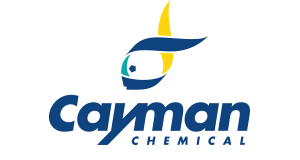Moxifloxacin (hydrochloride), CAS 186826-86-8
Moxifloxacin (hydrochloride), CAS 186826-86-8
Artikelnummer
CAY14830-1
Verpackungseinheit
1 g
Hersteller
Cayman Chemical
Verfügbarkeit:
wird geladen...
Preis wird geladen...
Shelf life (days): 1460.0
Formulation: A crystalline solid
Formal Name: 1-cyclopropyl-6-fluoro-1,4-dihydro-8-methoxy-7-[(4aS,7aS)-octahydro-6H-pyrrolo[3,4-b]pyridin-6-yl]-4-oxo-3-quinolinecarboxylic acid, monohydrochloride
Purity: ≥95%
Formula Markup: C21H24FN3O4 / HCl
Formula Weight: 437.9
CAS Number: 186826-86-8
Notes: Moxifloxacin is a fluoroquinolone antibiotic.{53219} It is active against 390 clinical isolates of aerobic and anaerobic Gram-positive and Gram-negative bacteria (MIC90s = ≤0.25 µg/ml), as well as clinical isolates of methicillin-susceptible and -resistant S. aureus (MIC90s = 0.12 and 2 µg/ml, respectively).{53219,53220} Moxifloxacin is an inhibitor of E. coli DNA gyrase that is selective for DNA gyrase over E. coli topoisomerase IV (IC50s = 0.51 and 38.8 mg/L, respectively, in cell-free assays).{53221} It prevents S. aureus- or P. aeruginosa-induced increases in bronchoalveolar lavage fluid (BALF) neutrophil infiltration and reduces S. aureus- or P. aeruginosa-induced increases in lung chemokine (C-X-C motif) ligand 1 (CXCL1) and IL-1β levels in mouse models of bacterial pneumonia when administered at a dose of 100 mg/kg twice per day for two days.{53222} Moxifloxacin (100 mg/kg) decreases the number of lung and spleen colony forming units (CFUs) in a mouse model of systemic M. tuberculosis infection.{53223} Formulations containing moxifloxacin have been used in the treatment of various bacterial infections.
Formulation: A crystalline solid
Formal Name: 1-cyclopropyl-6-fluoro-1,4-dihydro-8-methoxy-7-[(4aS,7aS)-octahydro-6H-pyrrolo[3,4-b]pyridin-6-yl]-4-oxo-3-quinolinecarboxylic acid, monohydrochloride
Purity: ≥95%
Formula Markup: C21H24FN3O4 / HCl
Formula Weight: 437.9
CAS Number: 186826-86-8
Notes: Moxifloxacin is a fluoroquinolone antibiotic.{53219} It is active against 390 clinical isolates of aerobic and anaerobic Gram-positive and Gram-negative bacteria (MIC90s = ≤0.25 µg/ml), as well as clinical isolates of methicillin-susceptible and -resistant S. aureus (MIC90s = 0.12 and 2 µg/ml, respectively).{53219,53220} Moxifloxacin is an inhibitor of E. coli DNA gyrase that is selective for DNA gyrase over E. coli topoisomerase IV (IC50s = 0.51 and 38.8 mg/L, respectively, in cell-free assays).{53221} It prevents S. aureus- or P. aeruginosa-induced increases in bronchoalveolar lavage fluid (BALF) neutrophil infiltration and reduces S. aureus- or P. aeruginosa-induced increases in lung chemokine (C-X-C motif) ligand 1 (CXCL1) and IL-1β levels in mouse models of bacterial pneumonia when administered at a dose of 100 mg/kg twice per day for two days.{53222} Moxifloxacin (100 mg/kg) decreases the number of lung and spleen colony forming units (CFUs) in a mouse model of systemic M. tuberculosis infection.{53223} Formulations containing moxifloxacin have been used in the treatment of various bacterial infections.

 English
English










